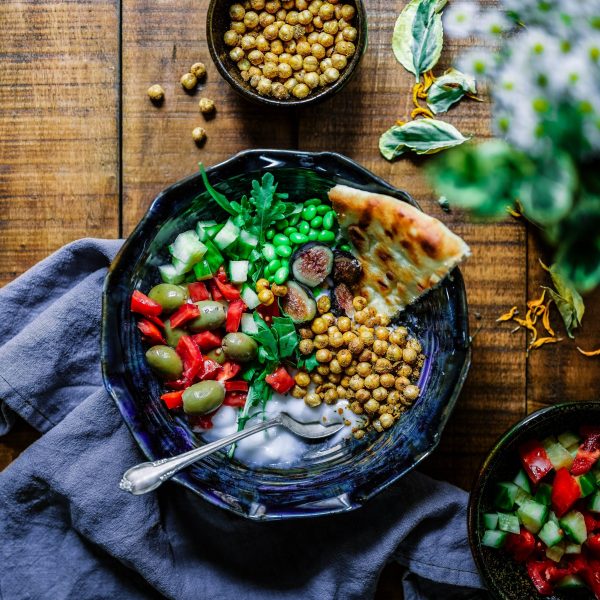Jefferson: America’s Epicurean President
 You may know Thomas Jefferson as the third U.S. President but ever consider that he has, thus far, been our nation’s only epicurean president? In his book “A Rich Spot of Earth”: Thomas Jefferson’s Revolutionary Garden at Monticello, Peter J. Hatch introduces yet another of Jefferson’s many extra-political interests that shaped his eclectic life: food and gardening.
You may know Thomas Jefferson as the third U.S. President but ever consider that he has, thus far, been our nation’s only epicurean president? In his book “A Rich Spot of Earth”: Thomas Jefferson’s Revolutionary Garden at Monticello, Peter J. Hatch introduces yet another of Jefferson’s many extra-political interests that shaped his eclectic life: food and gardening.
An influential writer, diplomat, and president, Thomas Jefferson had a sizable public relations presence in the late 18th and early 19th centuries. Thus, whatever he said or did likely carried greater significance in the context of the nation he represented both here and abroad. His gardening hobby served a greater purpose than satisfy his his vegetable cravings; it also functioned as a timely metaphor for American diversity, independence, and innovation.
Jefferson’s garden in Monticello presented “a roster of rare, unusual, and pioneering species,” according to Hatch. At the time, America relied primarily on “the customary products of Europe,” that is, cool-season vegetables, and most Americans maintained an English kitchen garden. But Jefferson, always a figure of innovation, created a horticultural melting pot in his garden. He planted tomatoes (a crop whose cultivation intimidated Northern Europeans), Indian corn, sesame, potato pumpkins, garlic, salsify, winter melons, and arcane, among many other crops. Many of the vegetables came from their place of origin, such as France and Italy. Jefferson even had vineyards in his Monticello garden as a result of his friendship with physician and horticulturist Philip Mazzei. His garden embodied America as the horticultural nexus linking the New and Old Worlds.
Jefferson also displayed another distinctly American value of welcoming various influences from abroad; indeed, his garden could be viewed as an Ellis Island of immigrant plants and vegetables! In terms of cuisine, Jefferson was an enthusiast of French cuisine, undoubtedly a result of his stay in France as a diplomat. His African-American chefs were trained to learn French cuisine to prepare French dishes at the Monticello kitchen. But the Jefferson household also served Mexican black bean soup; and olla, a Spanish dish; as well as foods that reflected an African-American influence on vegetable cuisine. And yet one cannot claim that Jefferson had un-American tastes; he may have been the first president to serve French fries at the President’ House and his wife Mary Randolph provided what may have been the first American recipe for potato chips!
Jefferson made it a point to have fresh produce both at the President’s House and at Monticello. But fresh food was more than just an epicurean luxury. Hatch describes Jefferson as a “champion of agriculture” who believed that the relationship between man and earth should be a core value of the new American state. Indeed, that relationship emphasizes a lifelong connection to nature’s fruits. But it also reflects man’s ability to be self-reliant. Jefferson’s expansive garden of vegetables and plants from all over the world showed that the American soil was a fertile land that could welcome a wide variety of influences, rather than a desolate wasteland that many Europeans perceived the United States to be. The concept of the garden also allowed Jefferson’s slaves to exercise autonomy to a limited extent. They would receive plots of land, and they cultivate their own gardens, using their harvest to feed their families and sell the rest to the Jefferson family. Indeed, the gardens at Monticello were maintained by individuals from all walks of life: Jefferson’s household, enslaved men, overseers, and hired European gardeners. In a sense, one can view Jefferson’s gardens as a democratic space that produced fruit, much like the United States itself.
As the country’s “First Foodie,” Jefferson left a horticultural legacy that remains influential to this day. In 2009, the Obama family planted the first vegetable garden since Eleanor Roosevelt’s victory garden during World War II, and Michelle Obama has used her vegetable garden to promote her “Let’s Move” campaign of healthy eating to combat obesity. What’s more, White House Executive Chef William Yosses brought Monticello seeds and plants of cool-weather vegetables to grow a fall garden at the White House. According to Yosses, “Monticello and Thomas Jefferson were an inspiration for us from the very beginning…[it’s] really the soul of our garden here.”
Throughout his life, Jefferson collected seeds and saved them. But centuries later, we see that he not only planted the seeds in his gardens; he also planted the seeds of an emerging American cuisine, that embraced diverse gastronomical influences, and an political awareness of horticulture for succeeding generations to embrace and emulate. Fittingly, Sam Kass, Head of the White House Kitchen Garden, plans to reserve a section of the White House garden in honor of Thomas Jefferson.




